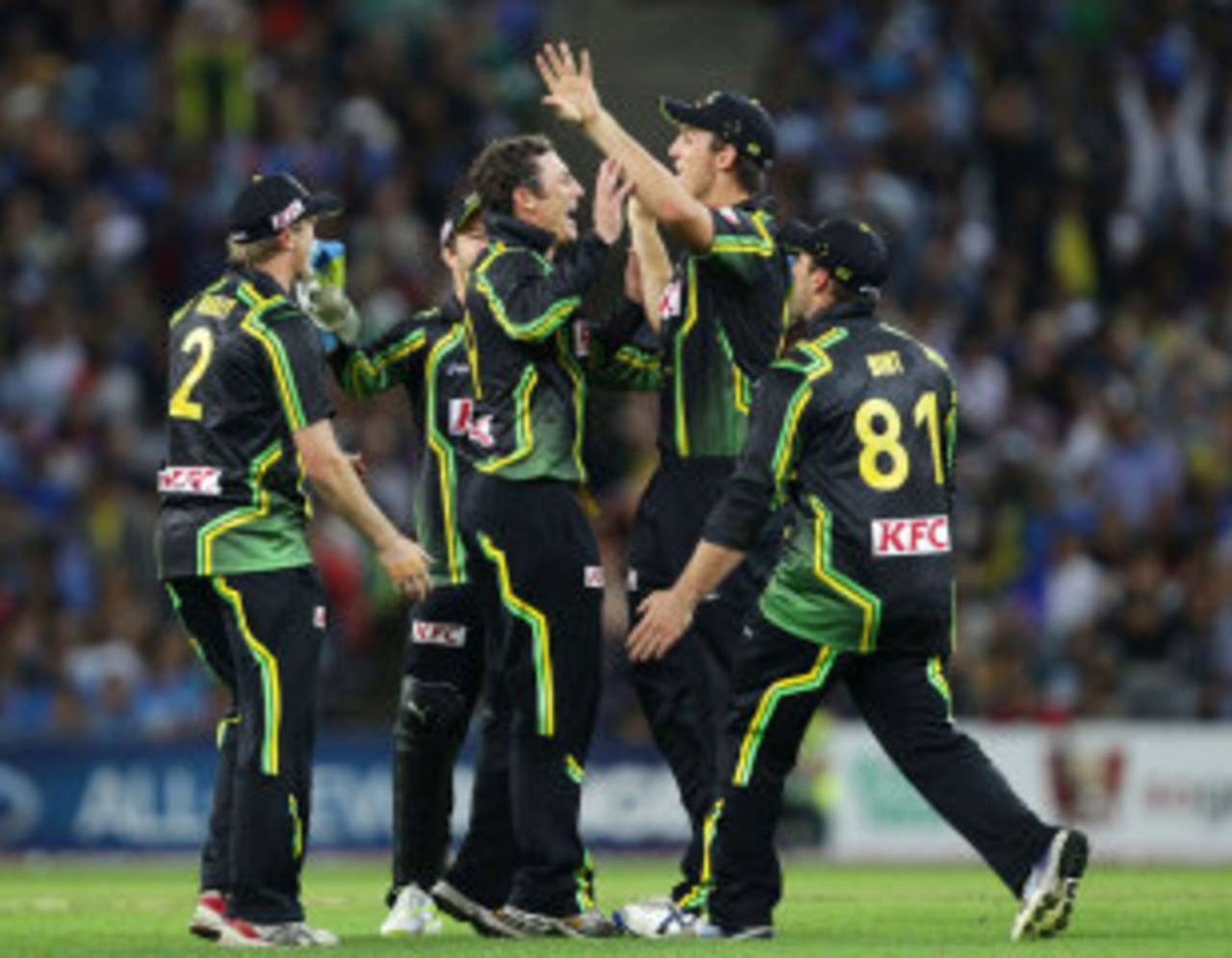As a departure from Australian cricket's long-held creed of picking the best XI and then the captain,
George Bailey is going to take some time to silence his doubters.
Though he presided over a 31-run defeat of India in his first match, promoting Matthew Wade to the opener's post where he struck a pivotal 72 and shuffling his bowlers expertly in the field, Bailey still had to answer a question about why he had batted at No. 5 in the final overs, instead of promoting one of Daniel Christian or Mitchell Marsh, the two heavy-hitters beneath him.
Bailey's response was measured, and reasoned, in keeping with the way he led the side. But it is likely he will need to make a few substantial scores in the job before those murmuring voices of suspicion are silenced.
"It would've been nice to get hold of a couple, but I thought it was really tough to get hold of a couple at the end," Bailey said. "Batting with Dave Hussey, who I've spent quite a lot of time batting with, he's one of the cleanest strikers in the world and he was struggling as well. It's nice to know we've got that depth behind us, [but] it wasn't through lack of trying that we were getting singles.
"I thought Matty's [Wade] batting was outstanding, to have someone who the rest of the team can bat around and have that platform makes it very easy, to have someone keeping wickets in hand for Huss to hit out late in the innings was important. I thought our team effort with the bat and the ball, all our bowlers, was really good and it was a great energy. It's hard to tell when you're on the field but my general feeling was there was great energy from our fielding group as well."
It was Hussey's bowling, as much as his batting with Bailey, that tilted things Australia's way. At 34, he continues to earn his way into Australia's Twenty20 and ODI squads, defying younger domestic performers to dislodge him. Few bowlers in the country, let alone batsmen, could have bowled the snaking off break that rattled the stumps of Rohit Sharma, or fielded with the athleticism and enthusiasm Hussey shares with his older brother Michael.
"As an all-round cricketer in the shorter format, he's outstanding, and you can add his fielding to that as well," Bailey said. "One of the great things about our Twenty20 team - and he sums that up beautifully - is consistency, and that's a really hard thing to get in Twenty20. As we just said about the Indian batting, sometimes it just doesn't work but I think with Huss, the way he performs and the way he prepares, is a great thing to watch and a great thing to have him in your team."
The variety of bowling options at Bailey's disposal was rich, from Brett Lee's searing pace to the left-arm wrist spin of Brad Hogg. As a captain who has prospered in Tasmania with resources never quite as ample, Bailey said he had enjoyed the chance to shuffle so many capable operators.
"The beauty and the hard things about Twenty20 is you can make decisions really late, so I've got a bit of a plan, mainly for the first six [overs] and we see how that goes, after that it's just a feel thing," he said "I thought our spinners bowled really well, so they bowled a majority of the overs through the middle there.
"We've got some outstanding death bowlers in Brett ... Xavier [Doherty] bowled a couple of great overs at the death for us, and we've got James Faulkner up our sleeve, who is a great death bowler too. We've got plenty of options, which makes my job pretty easy."
On match eve, Bailey had spoken of needing to have a plan A, B, C and D to cope with Twenty20's fluctuations. He felt match one had gone according to plan A, leaving greater challenges ahead - both from his opponents, and Australian cricket's chattering classes.
Daniel Brettig is an assistant editor at ESPNcricinfo. He tweets here
